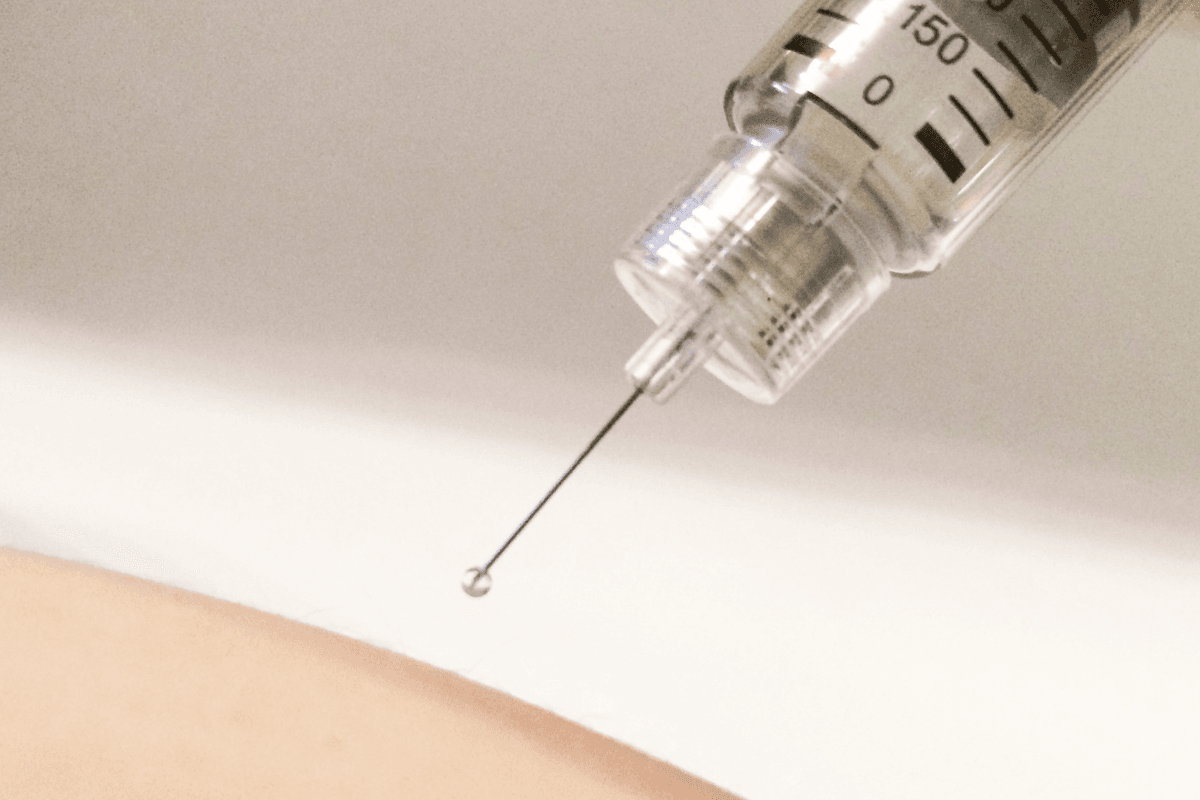Understanding Zepbound dosage helps you plan your weekly routine, anticipate dose changes, and recognize when to pause or adjust with your prescriber. This guide summarizes label-based steps, common scenarios, and practical tips in clear language.
Key Takeaways
- Stepwise increases: doses typically rise about every four weeks.
- Start low: early weeks focus on tolerability, not maximum effect.
- Maintenance varies: stay at a well-tolerated, effective dose.
- Hold increases if side effects intensify; reassess readiness.
- Missed a dose? Follow label timing rules to stay on track.
Zepbound Dosage: How the Titration Works
Tirzepatide (Zepbound) uses a gradual, stepwise approach. Most adults start at a low weekly amount for four weeks, then move up in small increments. This titration aims to improve tolerability, especially for gastrointestinal effects like nausea, while allowing clinicians to assess individual response over time.
The exact pace can vary, but the label describes increases roughly every four weeks until a suitable dose is reached. Some people remain at mid-range steps if benefits and side effects balance well. Others proceed to higher steps if benefits plateau and tolerability remains acceptable. For technique, rotate sites and use consistent timing each week; for site selection guidance, see Best Zepbound Injection Sites to line up comfort and absorption.
Starting Dose and Early Expectations
The initial weeks are about getting your body used to the medicine. Many clinicians use a low starting amount and keep it for about four weeks before the first increase. If early nausea, fullness, or reflux occur, they often improve as your body adapts. Appetite changes can begin at lower steps, but weight trends usually evolve more slowly.
People often ask about the zepbound starting dose for weight loss. The starting step is primarily for tolerability rather than peak effect. Discuss early goals with your prescriber, especially if you have a history of gastrointestinal sensitivity. For a broader view of appetite control and satiety, see Zepbound Weight Loss for how hunger cues may shift during therapy.
Dose Escalation Schedule and Dose Chart
Most patients follow an incremental pattern with increases about every four weeks. Your prescriber may modify timing based on how you feel and what the scale shows. The goal is to balance clinical efficacy with comfort, stepping up only when the current level feels stable.
Use this illustrative zepbound dose chart to understand the general flow. It reflects common label-based steps, but your individual plan may differ. Always confirm any change with your healthcare professional before adjusting.
| Week Range | Weekly Dose (mg) | Notes |
|---|---|---|
| Weeks 1–4 | 2.5 | Introduction phase; assess tolerability |
| Weeks 5–8 | 5 | First increase if prior step well tolerated |
| Weeks 9–12 | 7.5 | Consider increase if benefits need strengthening |
| Weeks 13–16 | 10 | Advance when side effects are manageable |
| Weeks 17–20 | 12.5 | Optional step, not required for everyone |
| Week 21+ | 15 | Upper labeled step for some patients |
When to Hold or Delay an Increase
Do not rush to the next step if you are still managing significant gastrointestinal symptoms, dizziness, or hydration concerns. Many prescribers delay escalation until side effects subside and daily routines feel stable. If symptoms persist beyond typical adaptation, remain at a lower step longer or discuss dose reduction. The official label advises individualizing titration and following missed-dose rules; see the FDA’s prescribing information for detailed instructions and warnings about risks like thyroid C-cell tumors and pancreatitis.
Storage and handling also matter as doses increase. Protect pens from excessive heat or freezing, and track expirations. For practical storage limits and travel-ready tips, see Zepbound Storage to avoid potency losses from temperature excursions.
What Dose Is Most Effective and When to Increase
There is no single answer to what dose of zepbound is most effective. Some people achieve strong appetite control at mid-range steps. Others may require higher steps to maintain momentum. Effectiveness is a mix of weight change, hunger levels, metabolic markers, and how well you tolerate side effects.
Plan increases only when the current step feels steady for at least several weeks. Consider sleep, stress, and nutrition, which influence appetite and cravings. If you are comparing molecules or prior experiences, the overview in Tirzepatide vs. Semaglutide explains pharmacology and outcomes to frame realistic expectations. Broader therapy rankings in Best GLP-1 for Weight Loss may also help contextualize your goals.
Maintenance Dosing and After Goal Weight
Maintenance means staying at the lowest step that maintains benefits with acceptable side effects. If you reach a comfortable level with steady habits, your prescriber may keep you there for longer. Over time, some patients reduce to a prior step if appetite control remains adequate.
Questions about the zepbound maintenance dose after goal weight are common. Some individuals maintain on mid-range steps, while others pause increases and reassess after gradual lifestyle adjustments. If weight begins to drift upward, your plan may include reinforcing diet quality or revisiting dose timing. For strategies to sustain results, see Prevent Weight Regain for habit-focused approaches during maintenance.
Practical Considerations: Units, Pens, Splitting, and Missed Doses
Each weekly injection delivers milligrams of tirzepatide, not insulin-style “units.” Pens come in strengths that match labeled steps. Do not split a weekly dose across multiple days unless your prescriber specifically instructs otherwise; weekly administration supports steady exposure for most users.
People sometimes ask about a zepbound dosing schedule while traveling or shifting routines. Aim for the same day each week. If you miss a dose and the next scheduled dose is more than four days away, take it as soon as possible; otherwise, skip and resume on the next scheduled day. These rules align with the FDA-approved medication guide; check the latest label for any updates. For trip logistics and packing, see Travel With Zepbound to keep timing consistent on the road.
Tip: Keep a simple calendar reminder and note any symptoms the day after your shot. This helps you and your prescriber identify patterns linked to injection timing.
Upper Limits, Plateaus, and Safety Checks
The label outlines what is the highest dose of zepbound for chronic weight management, which is often 15 mg once weekly. Not everyone needs the highest step. Many patients find a balance at lower levels where benefits are clear and side effects remain manageable.
If you hit a plateau, confirm sleep schedule, protein intake, hydration, and activity are consistent. Review other medications that may affect appetite or water retention. Consider staying at the current step longer before increasing. If new symptoms appear—like persistent abdominal pain, signs of gallbladder disease, or severe vomiting—pause and seek medical advice promptly. Refer to the FDA’s prescribing information for boxed warnings, contraindications, and monitoring details.
What to Expect After the First Dose
People often wonder what to expect after first dose of zepbound. The first week usually brings subtle appetite changes and early fullness. Some experience mild nausea, belching, or delayed stomach emptying sensations. These effects often improve over time, especially with smaller, slower meals and steady hydration.
Plan a light, protein-forward meal on injection day, then observe your body’s signals. If you feel queasy, prioritize bland foods and avoid alcohol. For appetite planning and meal structure, see Zepbound Diet Plan to pair dosing with practical nutrition. If fatigue is noticeable during titration, strategies in Zepbound and Fatigue may help you pace activities without overexertion.
Compare & Related Topics
Some readers explore alternatives or companion information while adjusting doses. For cardiovascular context with a related incretin, see Mounjaro Heart Benefits to understand broader metabolic effects beyond weight change. If you want a high-level library of behavioral and medication topics, browse Weight Management Articles for practical, evidence-informed guidance.
Patients also compare product landscapes when choosing long-term maintenance. Category overviews in Weight Management Products can help you discuss options with your clinician. For alcohol considerations during titration, Zepbound and Alcohol outlines how drinking may interact with side effects and appetite cues.
Recap
Start low, increase gradually, and individualize your endpoint. Focus on steady routines, symptom tracking, and nutrition while titrating. Hold increases if side effects escalate, and revisit fundamentals when progress stalls. When in doubt, align with label instructions and consult your prescriber before making any dose changes.
With clear expectations, most people can navigate titration confidently. Use the schedule as a framework, not a race. Combine consistent habits with periodic check-ins to identify the dose that balances benefits and tolerability.
Note: For safe storage, dose timing, and day-to-day handling, align your routine with official instructions and your clinician’s guidance. This reduces confusion and supports long-term adherence.
This content is for informational purposes only and is not a substitute for professional medical advice.


